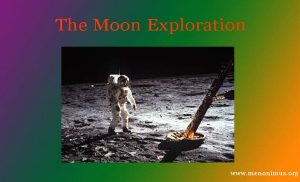Discover key facts about Moon exploration, including the first landing, water discoveries, future missions, and frequently asked questions about our nearest celestial neighbor.
The Moon Exploration: Comprehensive Study
Moon exploration has a long and fascinating history, stretching back thousands of years to ancient civilizations that worshiped the moon and used it to track the passage of time. However, it wasn’t until the 20th century that humans began to seriously explore the moon and gain a deeper understanding of its composition and formation.
In the late 1950s and early 1960s, the Cold War rivalry between the United States and the Soviet Union provided the backdrop for a new era of moon exploration. In 1957, the Soviet Union launched the first artificial satellite, Sputnik, into orbit, sparking a space race between the two superpowers. The United States responded by establishing the National Aeronautics and Space Administration (NASA) in 1958, and soon after, President John F. Kennedy announced the ambitious goal of sending an American to the moon within the decade.
The first successful moon landing was accomplished by the Apollo 11 mission on July 20, 1969, when astronauts Neil Armstrong and Edwin “Buzz” Aldrin became the first humans to walk on the moon. The Apollo program continued until 1972, with a total of six successful moon landings and 12 astronauts who walked on the moon. The Apollo missions brought back a wealth of information about the moon, including rock and soil samples that revealed the moon’s geological history and composition.
After the end of the Apollo program, moon exploration slowed down for several decades. However, in the late 1990s, new interest in moon exploration emerged as several countries, including the United States, Russia, and China, began to develop plans for future missions. In 2007, China became the third country to send a probe to the moon with the successful launch of the Chang’e 1 orbiter.
In recent years, the moon has become the focus of renewed interest, as several countries and private companies have announced plans for new missions to the moon, including plans for permanent lunar bases and the development of lunar resources. NASA has been at the forefront of these efforts, with plans for a sustainable human presence on the moon by 2024 through its Artemis program.
In conclusion, moon exploration has come a long way since the earliest days of human curiosity about this celestial body. From the first moon landing by Apollo 11 in 1969 to the current plans for a sustained human presence on the moon, we have learned much about the moon and its place in the solar system. Moon exploration continues to be a source of inspiration and a symbol of human achievement, and future missions will certainly reveal even more about this fascinating and mysterious world. 0 0 0
The Moon Exploration: Facts
Moon exploration has fascinated humanity for centuries, leading to significant scientific achievements and discoveries. Here are some key facts:
- First Moon Landing: On July 20, 1969, NASA’s Apollo 11 mission successfully landed the first humans, Neil Armstrong and Buzz Aldrin, on the Moon. Armstrong’s famous words, “That’s one small step for man, one giant leap for mankind,” were broadcasted worldwide.
- Apollo Missions: Between 1969 and 1972, NASA conducted six manned moon landings (Apollo 11, 12, 14, 15, 16, and 17), with Apollo 13 being an unsuccessful landing due to a malfunction.
- Moon’s Surface: The Moon has a rugged surface with craters, mountains, and large flat plains called “maria,” which were formed by ancient volcanic activity. The far side of the Moon, often called the “dark side,” has more craters and fewer maria.
- Moon Rocks: The Apollo missions brought back 382 kilograms (842 pounds) of lunar rocks, soil, and core samples, which have provided valuable insights into the Moon’s composition and history.
- Water on the Moon: Recent missions, including India’s Chandrayaan-1 and NASA’s Lunar Reconnaissance Orbiter, have confirmed the presence of water ice in permanently shadowed craters at the Moon’s poles, raising possibilities for future lunar bases.
- International Interest: Besides the U.S., other countries like Russia, China, and India have launched missions to explore the Moon. China’s Chang’e program has successfully landed rovers and even returned lunar samples to Earth.
- Future Missions: NASA’s Artemis program aims to return humans to the Moon by 2025, with plans to establish a sustainable presence, paving the way for future Mars exploration. 0 0 0
The Moon Exploration: FAQs
Some Frequently Asked Questions with Answers on Moon Exploration
1. What was the first successful mission to the Moon?
The first successful manned mission to the Moon was NASA’s Apollo 11 in 1969.
2. How many people have walked on the Moon?
Twelve astronauts have walked on the Moon, all during the Apollo missions from 1969 to 1972.
3. Is there water on the Moon?
Yes, water ice has been detected in permanently shadowed craters at the lunar poles.
4. Why is the Moon important for future space exploration?
The Moon serves as a potential base for deep space missions, offers resources like water ice, and provides valuable scientific data about the early solar system.
5. Which countries have landed on the Moon?
The United States, the Soviet Union (unmanned), and China have successfully landed on the Moon.
6. What is NASA’s Artemis program?
NASA’s Artemis program aims to return humans to the Moon by 2025, establish a sustainable presence, and prepare for future Mars missions.
7. What are the most significant discoveries from Moon exploration?
Key discoveries include the Moon’s geological history, evidence of volcanic activity, the presence of water ice, and the collection of lunar samples.
8. Can we live on the Moon?
While permanent human settlement on the Moon faces significant challenges, advancements in technology and the discovery of water ice make it a possibility in the future. 0 0 0.
The Moon Exploration
N.B. The article ‘The Moon Exploration’ originally belongs to the book ‘Essays on Science And Technology‘ by Menonim Menonimus.
The Moon Exploration
Books of Composition by M. Menonimus:
- Advertisement Writing
- Amplification Writing
- Note Making
- Paragraph Writing
- Notice Writing
- Passage Comprehension
- The Art of Poster Writing
- The Art of Letter Writing
- Report Writing
- Story Writing
- Substance Writing
- School Essays Part-I
- School Essays Part-II
- School English Grammar Part-I
- School English Grammar Part-II..
Related Search:
- Mars Exploration
- The History of Mars Exploration
- Artificial Intelligence Essay
- Exploration of the Moon
- Exploration-Moon











